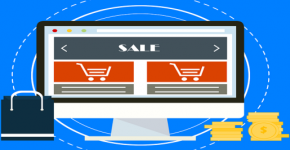7 Methods to Rectify Slow Woo-commerce Product Pages
For the last few years, WooCommerce has gained momentum to be the most loved eCommerce platform in the world. Thus, it is essential you know how to rectify slow WooCommerce product pages.
According to a recent study, WooCommerce downloads stand at 73,333, 266. Still, this platform is now the most love option among the top-ranked eCommerce websites such as Shopify and Magneto. Today, it powers more than 28% of all online stores.
The reason being, WooCommerce plugin is easier to use, safe, and free. Further, it has a professional appearance, making content marketing more accessible, and it provides several analytics choices. On top of that, it offers many free and premium add-ons. As a result, it gives you the ability to customize the presence of your online store based on your needs.
But, to receive more gains from your WooCommerce website, start by optimizing it well. For this, you can take help from WooCommerce Experts.
The page load time is among the essential features of your website performance. After attracting customers and engaging them, you should guide the sales funnel for conversion. However, if your product pages are unresponsive, then visitors might leave them without buying. For instance, more than half of mobile users abandon a site if the loading time is more than three seconds.
You can increase the speed of your slow WooCommerce product pages using these tips:
Rectify Database Problems
As time goes, your WooCommerce database stores numerous data, which comprises of your products, settings, orders, and others. Without a doubt, this is not a concern when you are starting. But, after the amount of your website data grows, you might experience many database problems that might affect the speed of your WooCommerce website.
Cleaning your database is among the most reliable means of resolving this issue. It is possible to perform the manual clean up through your cPanel. Alternatively, you can use WP plugins like WP-Optimize or WP Sweep. These plugins make the optimization process easier and faster. Even so, you should back up your website before you fix database problems.
Examine the Speed of Your Website
Before you optimize the speed of your product pages, test them with a lot of care. You can do so using tools such as GTMetrix, Google PageSpeed Insights, or Pingdom. After the scanning process is over, the tool rates the performance of your website on a scale ranging from 0-100. On top of that, it offers detailed insights into your main issues. Google PageSpeed Insights provides recommendations on how you can enhance the speed of your website.
Examine Your Theme and Plugins
Are you using WordPress for the first time? If so, then you know selecting the ideal theme for your WooCommerce store is not easier. When choosing your theme, ensure it is suitable for your store. And, its coding is proper and achieves all WordPress requirements.
If you failed to do so when selecting your theme, examine if this is slowing down the speed of your website. The methods of doing so are numerous. The fastest of all is creating a backup for your website, and then getting back to the default WP theme. If your site loads faster after doing so, it means the issue is with the selection of a theme that was not optimized well.
However, if your theme works as expected, examine your plugins because they can cause significant performance problems on your website. To know the plugin that is affecting the speed of your site, deactivate all your plugins and activate one by one.
Indeed, your website speed does not get affected by the number of plugins you use. For instance, instead of using one plugin with many unnecessary features that make your product pages slower, use 10 plugins which are optimized well.
Upgrade the Hosting Plan of Your Website
Most site owners use cheap shared hosting plans during the early stages. This makes great sense. The reason being, web hosting is not your main problem during your early stages of online presence because your website gets low traffic. However, bad web hosting might cause slow loading pages on your website once the traffic and conversions of your site grow.
To know if it’s the right time to change you’re your hosting provider, trace the resources of your online store regularly. To do so, move to the cPanel and pay attention to important data usages, like available disk space and bandwidth.
Here are some things to remember:
First, select a decent plan if your hosting provider is shared. You share resources with other users in a shared web hosting plan. So, your site speed will get affected if the users are many. For this reason, look for a shared hosting plan which provides a higher amount of bandwidth and disk space.
Second, change to a managed hosting plan if your resources give room. Although this option is expensive, it is among the best long-term investments. Managed hosting is also known as dedicated hosting because after buying a specialized plan, you lease the whole server. Thus, you will be using it alone. As a result, this might enhance the load times of your product pages.
Further, ensure you invest in a hosting server which is situated in the location of your majority target audience. Apart from improving the overall performance of your site, the speed gets enhanced.
Optimize Images
When it comes to eCommerce, images play a critical role in regards to your online presence. Apart from engaging visitors, they create trust with them and convert them into buyers.
However, they impact the performance of your website to a greater extent. For instance, every image on your page gets a different HTTP request. So, packing your site with many high-quality images means larger file sizes which might result in pathetic load times.
Nonetheless, this does not translate to the elimination of visual content from your site or the use of low-quality images. Instead, you should optimize all your images.
If you are a beginner, compress all your images. You can do using any of the many photo editing tools, such as TinyPNG, JPEG mini, or Photoshop. Or, use any of the many powerful plugins, such as WPSmushit, EWWW, or Imagify. These plugins reduce your image sizes up to 70% without interfering with the quality.
Among the essential choices to consider is lazy loading. This means if you enable lazy loading, the images get loaded when your visitor scrolls the site. Thus, if the customer did not get a specific picture on a particular page, loading will not happen. The best plugin to use in lazy loading is WP Rocket.
Use a Dependable Caching Plugin
A cache is a software or hardware component which stores data to make sure users access data faster in the future.
So, when purchasing a caching plugin, go for one that will provide a stored site page to your site visitors. Rather than loading the whole website each time a user returns to your website. Apart from enhancing user experiences, this will improve the load times of your pages.
Even so, remember this happens if your caching plugin is well configured. If you are a beginner, exclude the Checkout pages, My Account, and Cart from the cache as you set it up. Since they change as per a customer’s specific needs, ensure they remain dynamic.
WooCommerce websites have many strong caching plugins, such as Hyper Cache, WP SuperCache, WP Rocket, and W3 Total Cache. Nonetheless, the most liked premium cache plugin is WP Rocket as it is entirely compatible with the WooCommerce website. It excludes the dynamic web pages for you.
Buy a Content Delivery Network
The geographical gap that exists between you and your customers get bridged by the content delivery network. In short, a CDN is a network of servers that are distributed all over the world and work as a unit to offer faster use encounters.
A CDN copies your site’s static content to servers placed all over the world, as well as caching the contents of the page. So, when a user gets to your website, their browser downloads a copy of your site from the nearby server. In turn, it helps users open the page within seconds.
CDN choices are many in the net, and they include Cloudflare, Amazon CloudFront, KeyCDN, and MaxCDN. But, many factors determine the selection of an ideal content delivery network — for example, your budget, traffic, and your WooCommerce website size.
Many CDNs provide free plans. But, to get the most from your CDN, go for a premium plan.
Conclusion
The optimization of your WooCommerce product pages engages your customers, increase their satisfaction, and motivate them to convert. All the above methods are simple but effective in increasing your product page’s speed. If you need help regarding Woocomerce customizations then, you should hire Woocomerce experts.






